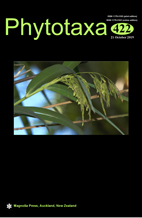Abstract
Mexico is considered as diversification and endemism center of the genus Echeveria. Previous tree inference studies have shown the genus to be non-monophyletic in relation to other genera, but sampling for Echeveria has been poor, and has not allowed to understand the relationships within the genus. In this work, Bayesian and maximum likelihood phylogenetic analysis were performed, using a combined standard DNA barcoding loci matrix (rbcL, matK and ITS2) and GenBank ITS2 accessions for Graptopetalum, some Sedum and few Echeveria taxa. The selection of taxa encompasses all current infrageneric categories of the genus Echeveria, as well as species from genera previously associated with it. The inferred consensus trees suggested that Echeveria is paraphyletic. Instead, four main clades were retrieved within the “Echeveria group”: Clade I includes exclusively Pachyphytum species. Clade II is formed by the majority of series Urbiniae; Clade III encompasses series Chloranthae, Ciliatae, Echeveria, Mucronatae, Nudae, Racemosae, Thyrsiflorae, Pachyphytum cuicatecananum and Thompsonella; Clade IV contains series Angulatae, Gibbiflorae, Occidentales, Pruinosae, Secundae, some Urbiniae species, Valvatae. genera Cremnophila, Graptopetalum and Reidmorania. Pachyphytum and Thompsonella were retrieved as monophyletic groups, but the first outside Echeveria while the latter inside. Results of our study suggest that Echeveria and the Echeveria Group require a redefinition.

